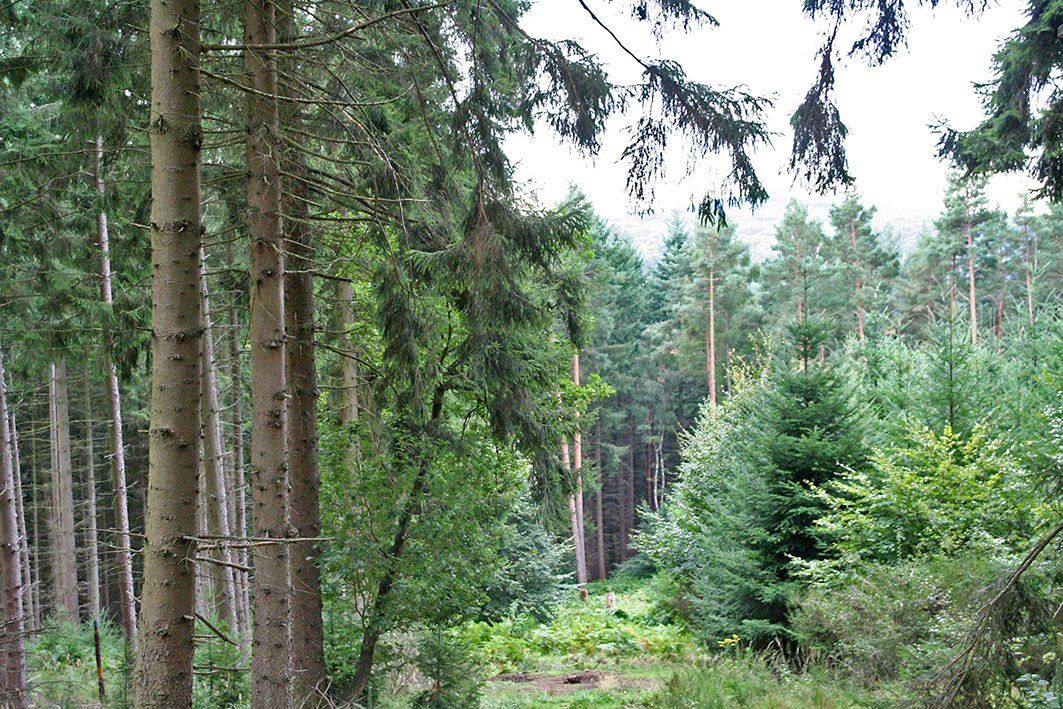The little wood science: tree species and their uses
In cooperation with the German wood industry
The material wood literally accompanies people from the cradle to the grave. Whether children's toys and crayons, bed frames, desks or living room furnishings. Wood is an integral part of our lives. In recent years, solid wood has again become a very popular material for furniture. The Main Association of the German Wood Industry (HDH), based in Bad Honnef near Bonn, provides an overview of the most commonly used types of wood.
Nadelhölzer:
Norway spruce (Latin Picea abies)
The most widespread tree species in Germany is the spruce. On average, every fourth tree in German forests is one of these. The spruce was originally native to the foothills of the Alps, but can now be found throughout Germany. However, according to the latest Federal Forest Inventory III, there has been a decline, which researchers say is due to climate change. Among foresters, the tree species is often called the “bread tree” because in the past it was also grown to pay for daily bread. It is also popularly known as the Norway spruce, although it is not a fir tree. Spruce wood is particularly used in the construction, construction and furniture wood sectors. In the field of medicine, the needles are used for respiratory diseases and rheumatic complaints.
Common pine (lat. Pinus sylvestris)
The Scots pine, known as “pine” in southern Germany, is also said to have a healing effect because the ingredients of this resin-rich conifer have an antibacterial effect. In terms of area, pine takes second place in our forests with 23%. It prefers to grow on sandy soils in northern Germany, but even moist locations can hardly prevent it from growing and thriving. Pine wood is highly valued in the areas of construction and furniture making because its resin-rich core makes it particularly weather-resistant. The name of the pine tree comes from the medieval word “Kien”, which means firewood with resin. In the past, the conifer was also used to produce turpentine and resin-containing adhesives, as the wood has the highest resin content of all German softwood species.
European larch (lat. Larix decidua)
In the past, larch was primarily used to extract resin and turpentine. Nowadays, this type of conifer is also used in furniture construction and interior design as well as in window construction. This resin-rich tree species originally comes from the Alpine region, but can now be found nationwide, although with an area occurrence of 3% it is one of the rare woods in Germany. Incidentally, the larch is the only coniferous tree species that sheds its needles in the cold season and forms new ones in the spring.
Silver fir (lat. Abies alba)
Sebastian Kneipp already used the pine needles for medicinal purposes as tea. But softwood can also be found in furniture and interior design as well as for high-quality musical instruments. At 2%, silver fir only has a small population in this country, but it is still more represented than many people would have expected. Experts saw one reason for their decline in the so-called wet core. This occurs when certain bacteria penetrate the wood of a freshly felled silver fir. The result: the wood moisture content in the core area increases to up to 160%, instead of the usual around 40% that spruce, for example, also has. The water stored in the core area can then lead to rot. A special feature of the fir is that no resin can be found inside the tree, only in the bark area. The word fir is derived from the Old North German word “tanna,” which means forest.
Douglas (lat. Poseudotsuga menziesii)
Once native to North America, Douglas fir is now also used in the German wood industry. From the 16th century onwards, European sailors brought seeds with them to the “Old World”. Softwood is currently represented on around 2% of the German forest area, and the trend is rising. The name of the tree species comes from the Scottish botanist David Douglas, who was the first to describe the Douglas fir in the 18th century. By the way, the tallest tree in Germany is a Douglas fir at 65 meters high. It is located in Freiburg im Breisgau and is called “Waltraut vom Mühlwald”. Douglas fir is a valued building and construction wood that is also used in furniture construction.
Laubhölzer:
European beech (Latin: Fagus sylvatica)
The “red” of the red beech comes from the reddish color of the freshly cut wood. The fruiting bodies of the beech tree are called beechnuts and were once often used to fatten pigs. In times of famine and war, they also served as a nutritional supplement for the common population. Beech wood is now used in furniture and interior design, and occasionally also in railway sleepers. The construction sector is now also showing interest in European beech because it has good static properties as laminated veneer lumber. With around 16% of the German forest area, the beech takes third place among the native wood species in the forest, as well as first place among the deciduous tree species. The tree species is mainly found in low mountain areas and has spread significantly in this country, especially in the last three decades.
Ahorn (lat. Acer)
In Canada, sugar maple is probably one of the most common types of wood, which is also reflected in the national flag of the second largest country in the world. Maple syrup is made from the sugar maple and is often served in combination with American pancakes. In general, the maple family is represented throughout the northern hemisphere. The color of maple wood ranges from whitish to light yellow. Three other subspecies are relevant to German forestry: field maple (Acer campestre), Norway maple (Acer platanoides) and sycamore maple (Acer pseudoplatanus). Maple wood is used in furniture and interior design as well as in high-quality musical instruments. Due to its external appearance, the maple is often confused with the plane tree, as their leaves are very similar. In medicine, the leaves of the field maple are used to cool insect bites or swelling.
Real walnut (lat. Juglans regia)
The walnut only became widespread throughout Europe thanks to the Roman Empire, as the tree originally comes from the Middle Arabian region. According to legend, the Romans valued this weather-resistant wood as a support post for growing grape vines, so it was increasingly planted in wine-growing regions. The brownish-black wood is particularly popular in high-quality furniture construction, interior design and musical instrument construction. By the way, the term “walnut” comes from the “welschen nut”, which means something like “Gallic nut”. In some countries, the “real walnut” is protected by nature - especially in Switzerland, only one walnut tree can be felled if a new one is planted.
Eiche (Lat. Quercus)
This tree species has always been an important symbol for religions such as Christianity or the mythologies from the Roman and Germanic empires. Today the “German Oak” can still be found in poems and song lyrics from the past centuries. Thanks to a nationwide increase, particularly in low mountain areas, their area volume has now increased to 11%. The oaks used for forestry usually correspond to one of three different species, which are difficult for the layperson to distinguish. The English oak (Quercus robur) and the sessile oak (Quercus petraea) are traditional European species, while the red oak (Quercus rubra) was “introduced” from North America several centuries ago. Botanists even divide the oak family into 400 to 600 species. Due to the high tannin content inside the wood, they are suitable for outdoor and indoor use as construction and furniture wood as well as for railway sleepers and veneers. Due to its tannic acid, the wood always smells a little sour. In the Middle Ages, the acid was also used to tan skins.
Common ash (lat. Fraxinus excelsior)
Tool handles and sports equipment make ash a very popular wood today, just as it was in the past. Thanks to its toughness, this European wood can absorb any force and does not break easily. Hardwood can also be found in furniture and interior design. The ancient Germanic peoples already revered the tree and placed the so-called world ash “Yggdrasil” at the center of their worldview. The sweet aroma of the wood ensures a pleasant smell when working. However, a fungus has been bothering the ash tree for several years. This causes the leaves to wilt prematurely, so that the trees are already bare in the landscape in summer. Its leaves are still used in medicine to treat gout and rheumatism.





